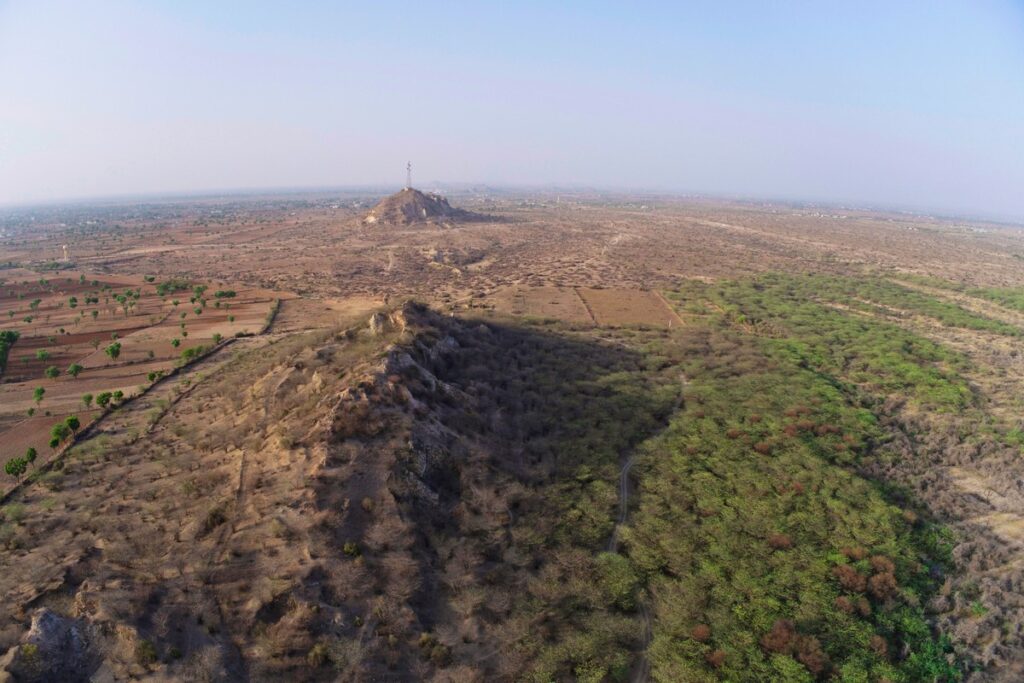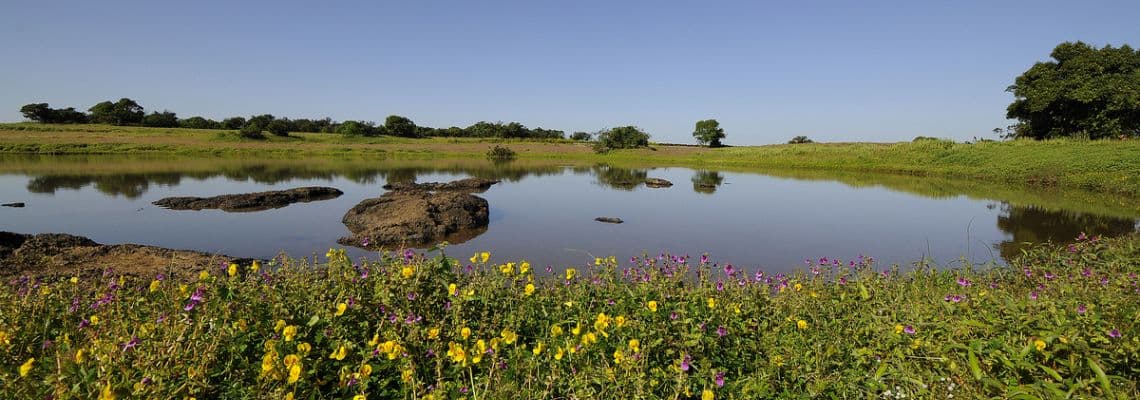Land degradation and conversion have become, in recent times, one of the most severe threats to natural ecosystems. Anthropogenic causes are proving extremely potent in altering natural landscapes in a way that has not been witnessed before. The United Nations declared 2020-2030 as the ‘Decade on Ecosystem Restoration’, encouraging large-scale restoration of native lands. WCT’s Ecosystem Restoration programme includes projects focused on restoring degraded grasslands, scrub forests, and forested habitats to reinstate ecosystem services and revive native flora and fauna.

Photo: Wildlife Conservation Trust
Our programme vision is to understand the current ecological status of ecologically degraded landscapes and bring back native biodiversity by ensuring protection, removal of invasives and restoration of native flora on the sites.
Project locations: Nimaaj and Bithiya in Rajasthan, and Pawana catchment in Maharashtra
As part of the Ecosystem Restoration programme, WCT:
- has identified three restoration project sites, of which two are in Rajasthan and one in Maharashtra.
- conducts detailed baseline surveys for fauna, flora, water, and soil at the project sites to understand the baseline status of biodiversity and restoration challenges.
- undertakes phase-wise restoration efforts in the project sites by systematically replacing invasive species with native ones.
- sets-up nurseries with native flora, including trees, herbaceous plants and grasses.
- carries out landscape vulnerability assessment – mainly landslide probability identification and physiographic vulnerability in Pawana catchment in the northern Western Ghats of Maharashtra.
- carries out a preliminary hydrological assessment survey in the Pawana catchment landscape.

Manual removal of the dense thickets of invasive plant Prosopis juliflora underway as part of WCT’s ecological restoration efforts (left). One of the sites after removal of Prosopis juliflora, revealing an open landscape with surviving native tree species (right). ©WCT

WCT has conducted baseline ecological surveys at Chhatrasagar, Rajasthan. A juvenile star tortoise (left) and male leopard (right) are two of the many species recorded during the surveys. ©Chetan Misher/WCT
WCT’s restoration approach:
- Prioritise restoration sites based on ecological need and feasibility
- Map land use, vegetation, soil, and hydrological features
- Conduct baseline surveys for fauna, flora, water, and soil carbon
- Analyse stakeholder dependence and aspirations
- Set-up nursery of native plant species
- Removal of invasives
- Assisted natural regeneration
- Monitor change in key indicators
Your donations support our on-ground operations, helping us meet our conservation goals.
Related Links
- Cores, Corridors, and Carnivores
- [Expert Speak] Law Over Advisory is the Urgent Need of the Hour
- World Day to Combat Desertification and Drought
- India’s Growing Fetish for Wildlife Of The Exotic Kind
- India’s Burning Exotic Pet Trade Crisis

